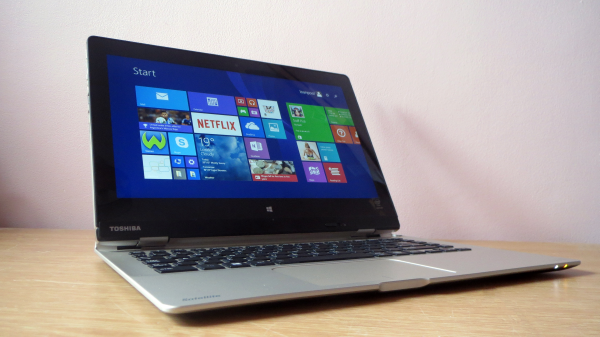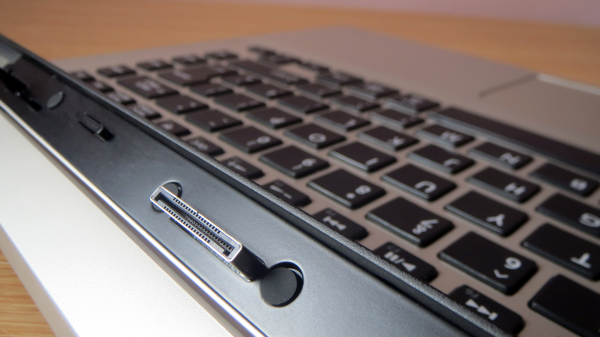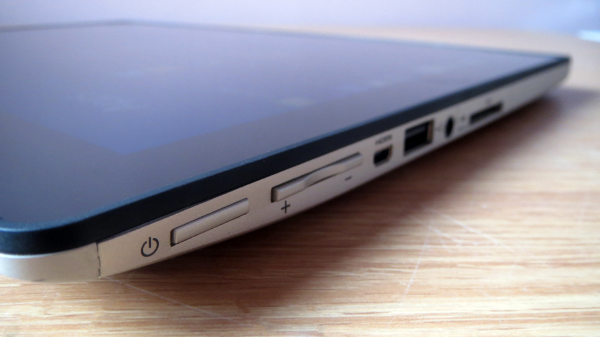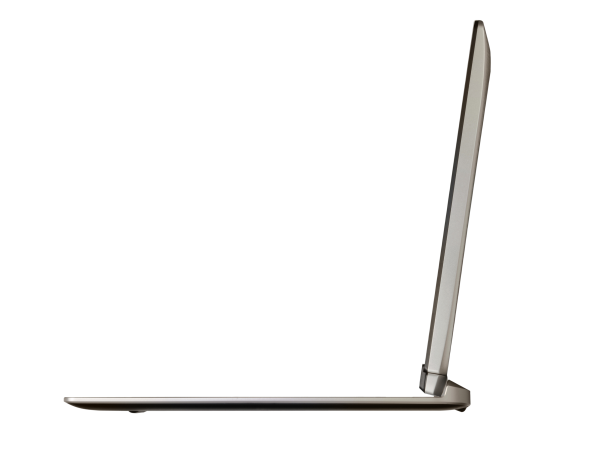Toshiba Satellite Click 2 L30W-B-10D Review - Performance, Heat, Noise and Battery Life Review
Performance, Heat, Noise and Battery Life
A budget hybrid that wants to replace your tablet and your laptop

Sections
- Page 1 Toshiba Satellite Click 2 L30W-B-10D Review
- Page 2 Performance, Heat, Noise and Battery Life Review
- Page 3 Keyboard, Trackpad, Software and Verdict Review
Toshiba Satellite Click 2 L30W-B-10D – Performance
Some of Intel’s cheapest chips have a new lease of life inside hybrids, and that’s no different here – a Pentium N3530 powers the Toshiba. It’s got four cores clocked between 2.16GHz and 2.58GHz, and it’s a step up from the Pentium N3520 inside the Lenovo, which had the same architecture but a lesser top speed. It’s a step ahead of the HP’s Celeron part too, which has two cores and slower speeds.
It sounds competitive, but the Toshiba scored 1,592 in PC Mark 7 – a better result than the 1,463 of the HP, but unable to match the 1,955 result from the Lenovo. In Geekbench, the Toshiba scored 2,858, which is between its rivals.

We uninstalled or deactivated several of the Satellite’s extra apps, and the L30W’s Geekbench scored jumped up to 3,402 – seven points better than the Lenovo. The increased wasn’t as dramatic in PC Mark 7, where the Toshiba scored a revised 1,689.
There’s no mistaking the Toshiba’s lack of power, with or without software. The L30W skipped between the Desktop and Start Screen without complaint, and Windows 8.1’s Live tiles slid smoothly, but we noticed long loading times when opening applications.
The sluggish benchmark scores aren’t helped by the poor hard disk. Its 500GB capacity matches the competition for size, but its sequential read and write speeds of 91MB/s and 74MB/s can’t match the Lenovo. The 18s boot time, achieved with Windows 8.1’s Fast Startup mode, is a boon – a second quicker than the Lenovo.
The Intel HD Graphics core uses older hardware, and it shows. Ice Storm is 3D Mark’s easiest test, and the Toshiba scored 20,254 points. That’s a long way ahead of the HP, and barely behind the Lenovo. This machine will only play older games or indie titles.

Toshiba Satellite Click 2 L30W-B-10D: Heat and Noise
This Toshiba isn’t powerful, but its efficient components ensure we had no issues with thermal performance. When running low-intensity tasks, we could only hear the fan by pressing our ear to the back of the screen – and, even then, occasional hard disk clicks drowned out the fan.
The good news continued in stress tests. The processor’s top temperature of 68°C is fine, and no heat translated to the outside of the tablet – so it remained comfortable to use throughout. Noise wasn’t an issue, either.

Toshiba Satellite Click 2 L30W-B-10D – Battery Life
Toshiba’s previous hybrid had two batteries, but the L30W makes do with a single three-cell power pack behind the screen.
Our standard battery tests loop a web browsing and video call simulation with the screen set to 40% brightness. With the Balanced power mode activated, the Toshiba lasted for 5hrs and 47mins. That’s only ten minutes short of the HP’s lifespan, but more than thirty minutes worse than the Lenovo’s result.
Turning the screen brightness down and using Power Saver mode eked around an hour more from the battery, but still this laptop won’t last a day away from a power source. Longevity isn’t great after a thirty-minute emergency charge, either; the Toshiba recovered 38% of its capacity, which is good for just over two hours of usage.
How we test laptops
Unlike other sites, we test every laptop we review thoroughly over an extended period of time. We use industry standard tests to compare features properly. We’ll always tell you what we find. We never, ever, accept money to review a product.


